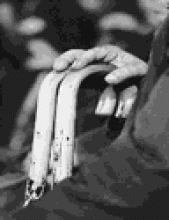Reason for posting: The use of coronary stents has improved the results of percutaneous coronary revascularization procedures. Along with newer antithrombotic therapy using glycoprotein IIb/IIIa platelet inhibitors, stents are used frequently in the management of acute coronary syndromes.1,2,3 However, a persistent problem with stents is the subsequent development of in-stent stenosis. Data from the British Columbia Cardiac Registries during the mid-1990s show that restenosis occurs in about 15% of patients with stents.1 To prevent this, stents have now been developed that are coated with drugs believed to be helpful in maintaining stent patency. Initial clinical trials of these drug-eluting stents have been completed and other trials are underway.
The CYPHER stent, a metal device that is coated with sirolimus, was approved in April 2003 by the US Food and Drug Administration (FDA) for use in angioplasty procedures. Early experience with the CYPHER stent has shown that stent thrombosis occurs in 0.5% of patients.4 The stent's manufacturer, Cordis Corporation, and the US Food and Drug Administration (FDA) estimate that the device has now been used in over 50 000 patients. The device was recently licensed for use in Canada.
Since the product was approved in the United States, the FDA has received 47 reports of stent thrombosis that occurred at the time of implantation or within a few days of implantation.5 Although it is unclear whether the rate of stent thrombosis that is being detected in clinical practice is higher than that observed in the pre-approval clinical trials, the manufacturer issued a warning letter to US physicians on July 7.6
The device: The stent, which is made of stainless steel, is inserted percutaneously and implanted in a diseased segment of a coronary artery. It is then expanded to fit snugly against the vessel wall.1 However, its metallic surface can stimulate thrombosis before it becomes entirely covered with endothelial tissue (a process that may take several weeks). During this time (and for 3 months after insertion), patients continue to take antiplatelet therapy. Sirolimus is an immunosupressant agent that is believed to prevent restenosis, probably by inhibition of cytokine-mediated and growth-factor-mediated proliferation of lymphocytes and smooth-muscle cells. A fixed amount of sirolimus per unit area is applied to the CYPHER stent, which is designed to release about 80% of the drug within 30 days of implantation.
In its letter to physicians, the manufacturer notes that some cardiologists may be inappropriately inserting the stents, mainly by overexpanding narrower stents so that they will fit in arteries with larger diameters. The manufacturer reports that because of high demand for the stent it focused its production on the smaller stents but is now producing a larger stent. The manufacturer also notes that some in-vitro laboratory experiments show that sirolimus potentiates the effect of some platelet agonists and thus may promote thrombus formation. Furthermore, it should be noted that in 1 major study that demonstrated the benefits of the CYPHER stent7 the device was investigated in a limited clinical application. Patients were eligible if they had disease of a native coronary artery (i.e., those with diseased grafts were excluded) in the setting of stable or unstable angina, or silent ischemia. Importantly, acute myocardial infarction was one of numerous exclusion criteria.
It is unclear whether the failures that have been reported are the result of inappropriate use of the stent as the manufacturer suggests. The FDA and the manufacturer are investigating and ask physicians to report stent failures.
What to do: The FDA recommends that health care professionals:
1. Match the stent size as closely as possible to vessel diameter.
2. Use stents in previously untreated vessels only. The stent is not indicated for the treatment of restenosis.
3. Use an adequate antiplatelet regimen.
4. Use proper technique to ensure that the stent is fully deployed and in contact with the vessel wall.
Stephen B. Choi Editorial Fellow CMAJ
Footnotes
-
Published at www.cmaj.ca on July 11, 2003.
Acknowledgements: I thank Drs. Madhu Natarajan and William Ghali for their critical review of a draft of this report.











